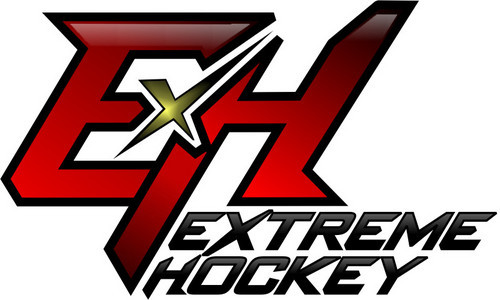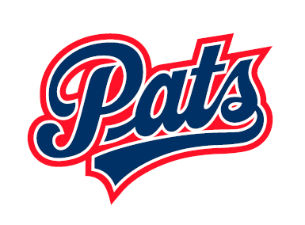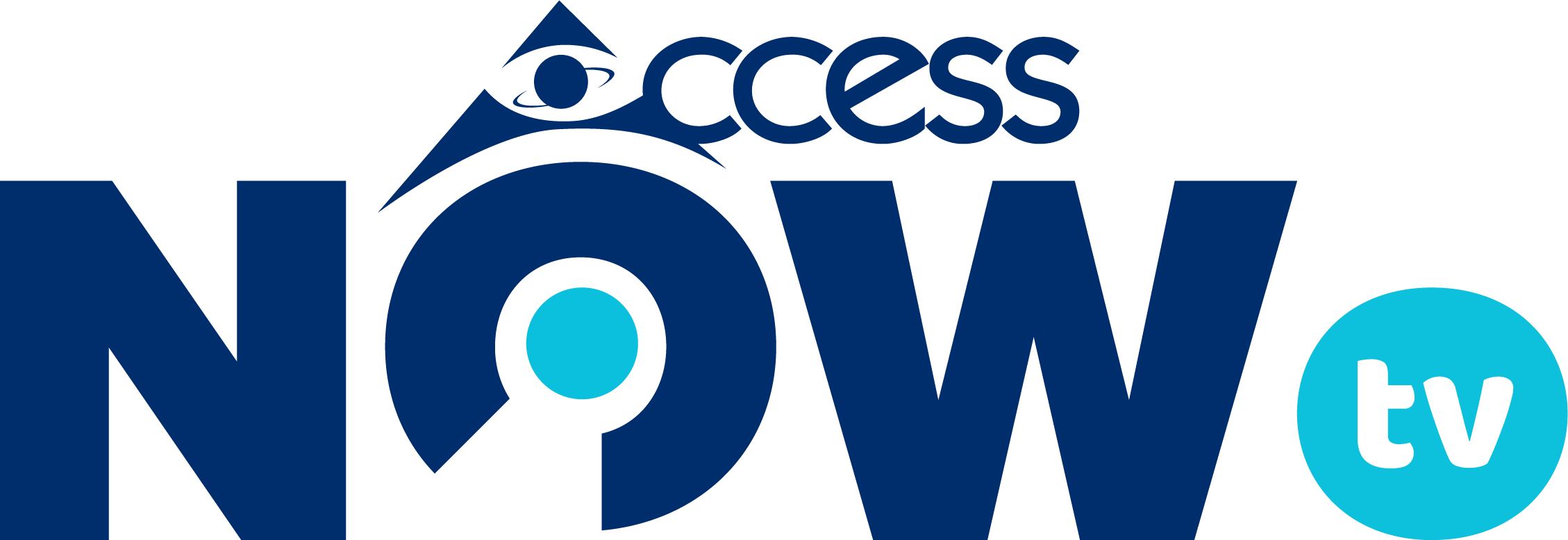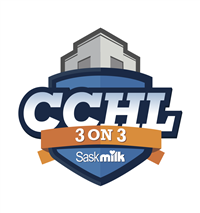Chances Of Making It In Pro Hockey
By Jim Parcels
April 2002
Hockey - It's one of the few things we can call Canadian through and through. It's a game that we are exposed to from the early stages of our childhood through a cultural bond no other country can equal.
Hockey is a game that children, teenagers, adults and seniors all have a solid affinity for through their past, present and future.
It seems that everyone in this country has a strong knowledge, personal relationship or direct attachment to our game and the players involved at all levels.
In recent years stories of parents, coaches, managers and recruiters turning the innocence of minor hockey into a perceived breeding ground for future stars has created a disproportionate amount of pressure on young athletes to exceed and develop.
Parents believe that if their kid is an elite level player in his league, they believe he's destined to make the NHL - even though there may be about 2,000 players similar in calibre as their child across Canada.
My journey through Ontario's amateur hockey has been diverse. After graduating college, I started out as a 20-year old trainer for the Peterborough Petes of the Ontario Hockey League (OHL) in 1989 before a three year tenure as marketing director for the Guelph Storm.
After returning to school for one year, I worked for three seasons as marketing and communications coordinator for the world's largest amateur hockey body, the Ontario Minor Hockey Association (OMHA) for three years. From 1999-2002 I was Director of Operations for the City of Vaughan Hockey Association- a minor hockey body north of Toronto that registers over 3,000 players.
My thirteen years in the business has exposed me to many of the truths, untruths and misconceptions that adults seem to have about our great game.
In 1995 when I returned to school after five years working in the OHL, I reflected back on a career in a league where I forged friendships with players, coaches and managers - some of whom who have gone onto prosperous pro careers and many of whom have moved into the mainstream workforce.
Looking back at those years, I had a keen interest in the "Where are they Now" stories of players who I saw first hand live the lives of athletes in the OHL and go onto professional careers.
Putting my experiences together, along with an extensive list of draft information and player background, led to a study on the chances of making it in pro hockey in 1995. The players from this study are now 27-years of age and were products of the minor hockey system of the province of Ontario in the mid-to-late 1980's.
The following is a synopsis of what my research found after collecting my OHL, NCAA, NHL and minor hockey data.
In 1989 I joined the Petes' after graduating college as their head trainer. When I walked into the dressing room for the first time, I saw pictures of Yzerman, Gainey, Redmond, Bowman and Jarvis adorning the walls of the dressing room. The Petes are the number one junior organization in the world for producing players for the NHL with over 130 graduates.
The first thing I thought was "Wow, all the guys in this dressing room this year are going to the NHL!"
Boy, was I wrong! During my tenure in the OHL, I witnessed firsthand approximately 200 players who played or tried out with both Guelph and Peterborough, two of the most successful franchises in the league over the past decade.
Some players on our teams moved onto pro and collegiate hockey careers while others moved into the mainstream workforce. Many are now truck drivers, teachers, sales reps, land surveyors and electricians.
Five years later I got thinking; how many of those elite junior players received some sort of financial return or end result on their investment of 10-15 years into the game of minor and junior hockey?
If the 38 players who pulled on a Petes' jersey while I was trainer, only four ever played in the NHL and only two are still there on a regular basis today. Only Mike Ricci and Jassen Cullimore are still active in the NHL.
That got me thinking: If the odds are that slim for the number one team in the world for putting players in the NHL, what are the odds for players in the dressing rooms of the Mississauga Senators Atoms, North York Canadians Peewees, Waterloo Tigers Minor Midgets, or North Bay Athletics Bantams?
The question I've asked over the years, and I'm sure several others have asked is, "What are my child's odds to make the National Hockey League?"
Hence the reason for the following study, The Chances of Making It in Pro Hockey. The only accurate way to measure the chances of making the 'pros' is to take an actual birth year as a sample category. Since hockey's competitive structure is based on the age of players, this approach is the only accurate way of taking a sample group.
In my research I utilized the birth year 1975 as a sample. This included all players active in minor and junior hockey in the province between the years 1988-1991. After collecting registration information from the Ontario Minor Hockey Association (OMHA), Northern Ontario Hockey Association (NOHA), Metro Toronto Hockey League (MTHL) and Hockey Development Centre for Ontario (HDCO), the approximate number of players active in Ontario in 1991 (born in 1975) was roughly 22,000!
This is the total number of players registered in programs from house league to Tier II/Jr.B. leagues for all "1975" players in the province. This same approach can be related to any other province in Canada (Ontario has approximately 40% of the registered minor hockey players in Canada.)
The total of 22,000 doesn't include approximately 7,500 players who left the game through natural attrition (i.e. dropping out of the game at various levels) from Tyke to Bantam who were also born that year. The attrition rate in any given hockey year is about 8-10% annually.
Therefore, there were approximately 30,000 players who played minor hockey at one time or another in this province who had "1975" birth dates. That creates a sample group of approximately 30,000 players for which this study is based.
The same total can be applied in an approximate fashion to any players' birth year (i.e. 1968, 1979 etc.) for Ontario.
For the players born in 1975 the Ontario Hockey League draft was held in 1991 (for underage Bantams born in 1975) and 1992 for their "open" Midget draft year.
The "1975" group of players was considered by many NHL Scouts as the strongest group of players the province has ever produced.
= Out of those 232 players drafted to the OHL, only 105 ever played one game in the OHL.
= Out of those 105 players, only 90 finished their full 3 or 4 years of eligibility in the OHL.
= Of those 30,000 players, only 42 played NCAA Division I hockey! Remember too that U.S. scholarships are not the large educational packages that have been offered by NCAA schools in the past (see more information below). The following "1975" players had either full or partial NCAA scholarships.
= There were 56 players from the "1975" age group that were either drafted or signed by a National Hockey League team (by far the most of any birth year Ontario has experienced!). Forty-eight (48) of those 56 players were drafted by NHL teams!
= Of the 48 drafted players only 39 signed contracts with NHL teams. Eight players signed as free agents after going un-drafted as NCAA or major junior players.
= Of the 48 signed players, only 32 have seen action to date in an NHL game.
= Of the 32 players with NHL experience, only 15 have played more than one (1) full NHL season!
= Of these 32 players, only 21 were active in the NHL as of April 1, 2002.
= Of those 32 who have played an NHL game to date, only 18-20 will earn a second contract with an NHL team. About half of those players earning second contracts will see them finish that second contract with an NHL team. The remainder of the 56 players will toil in the minor pros in the IHL, AHL, ECHL or Europe.
= Of the 32 players who have seen action in an NHL game, only six (6) have qualified for the NHL's Player Pension (minimum 400 games in the NHL!).
NCAA Scholarships: One option for young hockey players at age 16-18 in the province is to acquire some sort of scholarship or financial assistance to play NCAA hockey in the United States.
What should also be known is that full scholarships to Canadian players are almost non-existent today. The U.S.is developing hockey players at an incredible rate and when it comes time to recruit, NCAA schools are offering their packages to American players. The number of Ontario players on scholarship in NCAA Division I has dropped 63% in the past ten years!
Today scholarships granted by state-funded schools are now usually reserved for state-resident hockey players. In the 1970's the comparison between a U.S. player and a Canadian player in calibre was large. The Canuck would almost always receive a hockey scholarship. Today, with the rapid evolution of hockey in the U.S., the University almost always chooses the American player over a Canadian.
Most NCAA scholarships are not "full rides" as many people tend to think. Canadian players are considered "out of state" and regular tuition for a player without scholarship ranges between $25,000-40,000 U.S. per year. In most cases, Canadian players are on partial scholarships where only 40-60% of their education costs are covered at the most and are granted only on a year-to-year basis.
This means that if you spend four years at an NCAA school, you may return home owing or having paid approximately $50,000-75,000 U.S! Very few Canadian players today attain "full rides" to NCAA schools. Most NCAA teams only have 17 scholarships per team with approximately 30 players on their roster. Something has to give financially for a roster that big!
If someone tells you that a Canadian player is "On a Full Ride" - chances are it's not the case.
With many hockey scholarships, additional years (to finish degrees) are not covered by the scholarship unless players are entering post graduate work study. So to finish their degree, players many have to dole out an additional $25,000-40,000 to complete the degree at that school depending on course length.
Interestingly enough, NCAA teams have only 17 scholarships awarded annually with approximately 30 players on its hockey roster. That means that 30 players have to divvy up 17 scholarships each year to play on the hockey club and attend the school. With the major difference in the U.S. dollar today, it makes attending an NCAA school a very expensive venture for a Canadian - especially over four years!
NCAA scholarships are also reviewed after each year, therefore if grades, part time work and hockey ability are not measuring up to school standards, the scholarship can be withdrawn at any time. Scholarships have also been withdrawn from players who have suffered serious injuries.
One other thing to consider when looking at NCAA programs is that most teams have 28-32 players on the roster! That means that most players don't see regular ice time until their Junior (3rd) year!
Here is a detailed list of Ontario "1975's" that had experience in the NCAA system. "1975" Players who played NCAA Division I Hockey Major Junior Hockey (OHL) The Ontario Hockey League has been offering a high-level league that has produced thousands of players for the professional ranks since in the mid-1930's.
The twenty OHL teams across Ontario and the upper U.S.(now Michigan and Pennsylvania) offer opportunities to players at ages 16-20 to develop in a junior setting.
Most OHL teams stock their rosters through a Priority Selection or Draft in May that selects players from Bantam, Midget and Junior 'A' or 'B' programs from Ontario.
Players choosing to play OHL hockey forfeit their ability to attain an NCAA scholarship. Many players at age 16 and 17 are faced with making a decision to play junior or maintain NCAA eligibility.
Its' a tough choice for a player in grade eleven to make an important career decision. The chances of a player making an OHL team is about 2.5 times greater than acquiring a partial scholarship to an NCAA school.
OHL teams also provide a strong option for players by offering Education Packages that range between $5,000-12,000 for each year of junior service to go towards a CIAU (CIS) education.
For example, if Johnny Smith plays three years for the Oshawa Generals, he can accrue up to $36,000.00 towards his educational costs if he decides to attend a CIAU (CIS) school after his junior career is over. However, educational packages become voided if the OHL player signs a professional contract of any kind.
The following is a breakdown of players from Ontario and their current status:
'1975' Players Drafted or Signed as Free Agents to NHL teams: The Reality of an NHL Contract
Part of the public perception of hockey is that professional hockey players, for the most part, are wealthy, well-to-do people with a lifestyle many of us cannot relate to.
In some cases that is true. However, many professional hockey players live a lifestyle that is regimented with travel schedules, workouts, rehabilitation appointments and meal plans. To go along with it, players live a life of daily uncertainty as to where their next game will be played.
A player that played for us in Peterborough has played with 28 different professional teams in just over seasons!
Most pro players play an average of a 5-6 year professional career that sees many play on more than one team each year. Players are traded, waived, demoted, promoted etc. 2-3 times per season - many times across the continent at the whim of a coach or general manager.
One serious misconception surrounding the massive contracts that are announced when players signed is the actual residual value of the initial contracts a player signs.
This is something that parents should take a good hard look at before jumping to conclusions about a hockey career.
Let's say for example Johnny Smith signs a 3-year, $1.1 million contract with the Leafs with a signing bonus of $250,000.00. The contact is usually a two-way or three-way contract which means it will pay him for games active in the NHL (Tier I), AHL (Tier II) or ECHL (Tier III) pro leagues over the three years.
Sounds like he's deposited $1.2 million into his bank account at age 19 doesn't it?
Take a closer look.
Let's say Johnny Smith has finished his OHL eligibility and is drafted by the Leafs and, like most new prospects, is assigned to the American Hockey League (AHL) to start his career. Johnny's contract is common for players his age and caliber. Here's how Johnny's 3-year, $1.1 million deal breaks down. (All figures in U.S. dollars)
| CONTRACT YEAR | NHL SALARY | AHL SALARY | ECHL SALARY |
| First Year | $300,000 | $50,000 | $35,000 |
| Second Year | $350,000 | $55,000 | $40,000 |
| Third Year | $450,000 | $60,000 | $45,000 |
| TOTAL | $1,100,000 | $165,000 | $120,000 |
Johnny also earns a signing bonus of $200,000.00 payable over three years. The bonus is money that a player should never touch. The lump payments of approximately $66,000.00 are paid each year and subject to taxes in most cases. So approximately $110,000.00 is Johnny's to keep - that's about two years salary for the average Canadian middle-aged male.
Let's say Johnny plays 40 games with the Leafs' AHL team (approx. + the season), in his first pro year. That means he earned about 50% of his $50,000 AHL salary in his contract over the first three months of the season. That's roughly 14 weeks of hockey.
Salary earned for 14-weeks in the AHL: $26,900.00. Before taxes and living expenses. Then, let's pretend Johnny gets called up for two weeks due to injuries to the NHL club and plays approximately five games "In the Show".
Playing in the NHL now means Johnny will earn two weeks out of a 28-week NHL season - that's a total pay cheque of approximately $21,000.00 in just two weeks! (Take his $300,000.00/a. salary and divide it into two weeks work).
Salary earned for 2-weeks in the NHL: $21,000.00 Before taxes and living expenses. Then Johnny is returned to the AHL for the remainder of his first pro season and earns the final 12-weeks of his contract in the minors - that's another $23,000.00.
Salary earned for 12-weeks in the AHL: $23,000.00 Before taxes and living expenses. Therefore, in Johnny's first professional season (which resembles many NHL prospects) he earned approximately $70,000.00 in his first pro season plus what his signing bonus of $66,000.00 will yield.
In total, Johnny earned $136,000.00 in his first year of pro hockey - half of which was his signing bonus.
After taxes he's earned approximately $75,000.00 for that playing season - and he's played five games in the NHL!
But didn't Johnny sign a $1.1 million contract with a bonus of $200,000.00 just one year ago? Doesn't that mean he should have earned more?
No.
What this shows is the value of playing time in the National Hockey League and what it means to remain playing at the highest level. Since most of Johnny's first season was spent in the AHL, his earnings drop significantly.
Among the "1975" players who signed NHL deals, only four players didn't see time in the American Hockey League during their first contract. The remainder of the 48 signed spent considerable time in the minors and earned only a fraction of what they originally signed for.
What this means is that about 75% of NHL prospects earn only a 1/4th of their original contracts after taxes and expenses are paid!
Makes you wonder if a 15 year investment into minor and junior hockey is paying off doesn't it?
Hence the importance of playing regularly in the NHL!
That dollar figure you hear on the radio and TV about a 19-year old getting a million dollar deal is not what it sounds like!
Another facet of an NHL career to consider is that the NHLPA pension plan activates only when a player has played 400 games - in the NHL!
The NHL pension, after a player qualifies with 400 games or more, is an annual pension payment of approximately $80,000.00 per year for the remainder of his life.
Only six "1975" players have qualified for the NHL pension and only three from that group are close to attaining that 400-game mark.
Hence the importance of remaining on an NHL roster for as long as possible.
Conclusion: In closing, I should point out that this study is in no way an attempt to dishearten or demoralize the dreams of children playing minor hockey.
It is neither an attempt to downgrade or diminish the efforts of minor, collegiate or junior hockey programs. This study serves as an eye opener for parents, coaches, managers and recruiters who have an idea their players are "long shots" but have never researched or been presented with the exact numbers.
If you have a chance to play at a higher level in junior or college, take it, but don't expect it to be a ticket to the National Hockey League and ignore all educational aspects of your life.
Don't sacrifice a normal family lifestyle trying to turn your 12-year old into a pro. He is up against a lot more in life at that age than having to deal with the pressure of being his parent's retirement plan.
Note about the author: Jim is a 34-year old resident of Whitby, Ontario who spent 13 years working in the minor and junior hockey business in Ontario. He spent two years as Trainer for the OHL Peterborough Petes, three years as Marketing Coordinator for the OHL's Guelph Storm, four years as Marketing Director for the Ontario Minor Hockey Association (OMHA) and three years as Director of Operations for the City of Vaughan Hockey Association just north of Toronto. Please direct all questions and comments to Jim's email at: package1@hotmail.com










